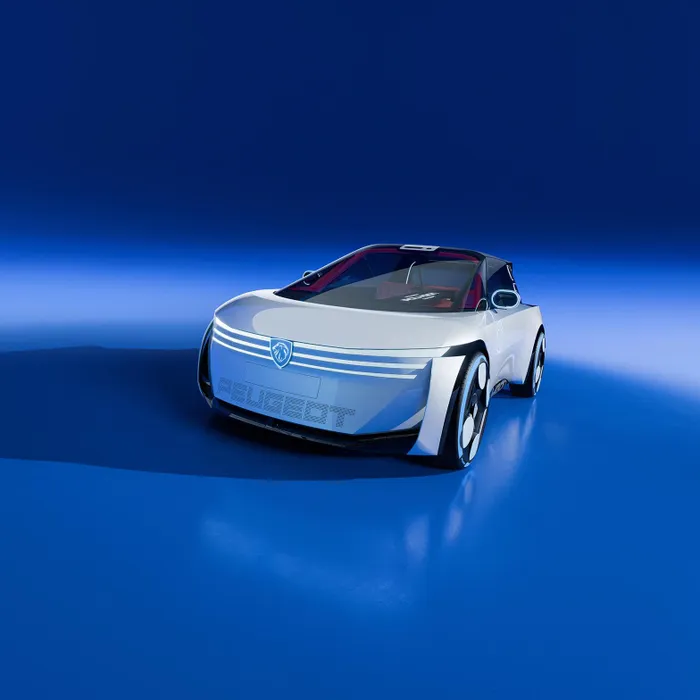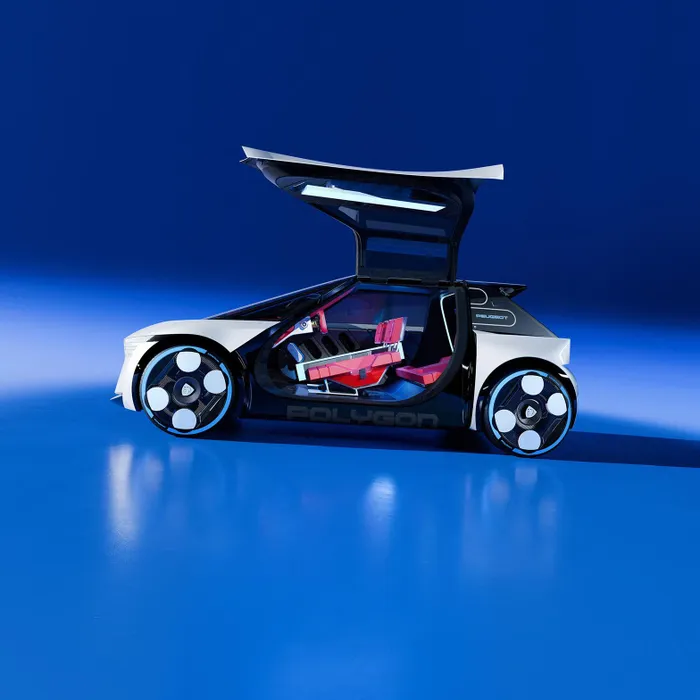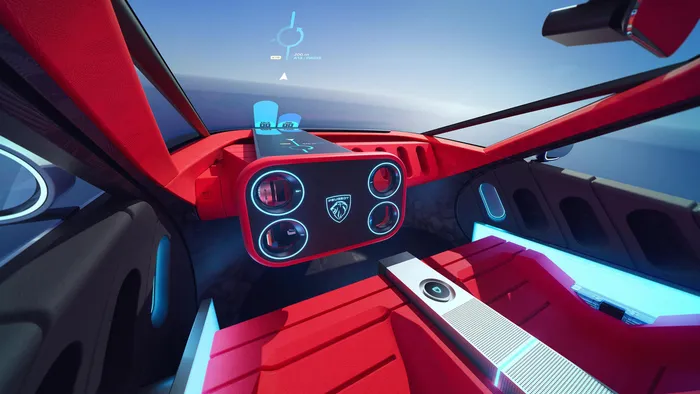Beyond the wheel: how gaming reimagined and influenced Peugeot's Polygon concept

Peugeot’s Polygon concept takes a creative approach to showing what its future cars could look like.
Image: Supplied
The French have a knack for designing cars that either take your breath away or leave you shaking your head, wondering whether it was drawn on a napkin at a street cafe after a long boozy lunch.
And when it comes to concept cars, well, then things get a bit extraordinary and in Peugeot’s case, cars like Vroomster, 607 Feline, Moovie and Quasar come to mind.
Their latest creation is the Polygon concept, which takes a creative approach to showing what its future cars could look like.
While it still exists mainly in the digital world, Polygon, they say, is more than a showpiece – it’s a rolling laboratory for the technologies the French brand plans to introduce from 2027 onwards.
Taking centre stage of the concept is a new steering idea called the Hypersquare, combined with Steer-by-Wire technology. Together, they point to how Peugeot sees driving evolving in the next decade.
A new way to steer
We've been turning round steering wheels for over a century. Peugeot’s Hypersquare replaces that with a square-shaped controller that looks more like a gaming device than a traditional wheel.
It’s not connected to the wheels mechanically but uses a fully electronic system, known as Steer-by-Wire.
It allows the steering response to change depending on speed. In tight spaces or parking, the Hypersquare needs less movement – under one full rotation lock-to-lock – while at higher speeds, smaller inputs guide the car.
Peugeot says the combination improves precision, comfort and responsiveness, filtering out road vibrations while still letting the driver feel surface changes.
The company plans to bring the system to a production car in 2027, taking a cue from how similar technology has been used in aircraft.

While it still exists mainly in the digital world, it’s a rolling laboratory for the technologies the French brand plans to introduce from 2027 onwards.
Image: Supplied
New cockpit
Polygon also shows how Peugeot’s next-generation i-Cockpit might look. Instead of a dashboard filled with displays, all the driving information is projected directly onto the windscreen through a Micro-LED panel behind the Hypersquare.
It’s similar to a head-up display, but on a much larger scale, with information appearing in the driver’s line of sight.
The projection can be customised for different driving modes – Cruise, Fun or Hyper – which adjust both the interior and exterior lighting. When stationary, the system allows the Micro-LEDs to display patterns visible from outside the car, connecting the vehicle’s interior ambience with its external design.
The Hypersquare itself also holds key controls in four pods at its corners, keeping most functions within thumb reach. Peugeot says it’s an ergonomic layout aimed at decluttering the cockpit and letting drivers focus on the road ahead.
If the driving information on the windscreen sounds familiar, it’s because BMW’s recently launched Neue Klasse iX3 applies the same principles.
Exterior
Polygon carries forward Peugeot’s “feline” design language but strips it back to simpler, geometric lines. The brand’s familiar three-claw lighting signature is retained but stretched horizontally across the front and rear using Micro-LED panels.
The charging port area has its own small display on the C-pillar, showing the battery’s charge level without the driver needing to get inside.
Bright colour details appear on the body panels, wheels and tyres – the latter developed with Goodyear and featuring laser-engraved patterns and coloured sidewalls. The tyres also include Goodyear’s SightLine system, which sends real-time information about tyre and road conditions to the car’s display.

Taking centre stage of the concept is a new steering idea called the Hypersquare, combined with Steer-by-Wire technology.
Image: Supplied
Interior
The concept’s cabin focuses on space and light. Without a traditional steering column or dashboard, the front looks open and airy. The windscreen has been pushed forward and downward, and the usual B-pillars have been removed to create a more panoramic view.
Peugeot’s designers have taken advantage of the flat floor and new architecture to make the interior more modular. The dashboard layout is adjustable, with holders and mounts for personal items such as phones, headphones or small bags.
The seats use a lightweight structure that combines a 3D-printed shell with single-piece moulded foam, and the components can be swapped for new colours or different shapes. They are made from only three pieces – shell, frame and foam – instead of dozens of separate components.
Sustainable materials
A major part of the Polygon project is to experiment with how cars can be built more efficiently. Peugeot says the concept uses fewer parts than a traditional car, making it lighter and easier to assemble or recycle at the end of its life.
Many components, including the wheel covers and interior elements, are 3D-printed from recycled plastics (R-PET). The interior trim is made from what the company calls “forged textile”, produced from old Peugeot seats that have been broken down and reused. Even the interior paint contains recycled materials from used tyres.
Instead of doors, it has two large butterfly doors for easier access and fewer moving parts.
This not only reduces weight but also makes customisation easier. Owners could, in theory, refresh their car’s interior or exterior over time without needing a complete replacement.

Polygon also shows how Peugeot’s next-generation i-Cockpit might look.
Image: Supplied
Many personalities
Peugeot uses Polygon to explore how personalisation could become part of vehicle ownership. Almost every visible part can be swapped, updated or reconfigured, from the Hypersquare’s finish to the wheel covers and interior colours.
To illustrate this, Peugeot created three design “moods”:
- Urban, with a smooth, minimalist look for city driving.
- Player, which carries a more performance-inspired design.
- Explorer, a raised, rugged version aimed at off-road styling.
What next?
Peugeot says the Polygon concept isn’t about near-term production; rather, it’s a test for ideas that may shape their lineup from 2027. The Hypersquare steering, simplified interior, and modular construction signal a shift toward lighter, more efficient, and more connected vehicles.
It’s also an indication that digital environments like gaming are becoming a new way for carmakers to showcase technology and engage younger audiences.
For now, Polygon lives in the virtual world, but the ideas it represents are very real – and could point to a future where driving, design, and digital life blend far more closely than before.
Related Topics: